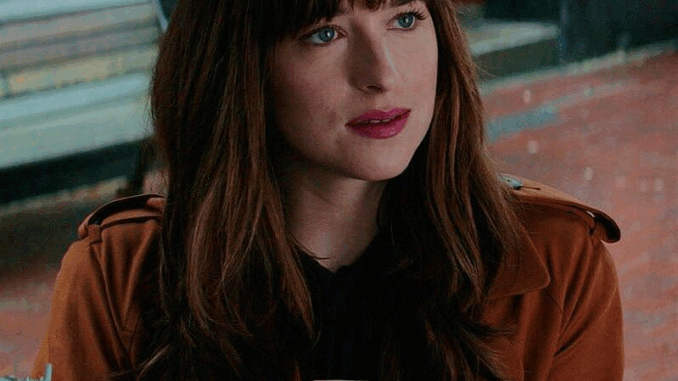
It was bold, erotic, and emotionally explosive—but Dakota Johnson wanted no part of it. Behind the glossy, seductive world of Fifty Shades, there was one scene that sparked fierce backstage tension, and nearly shut down production for an entire day.
During the filming of Fifty Shades Freed, a particular scene in the original script called for Ana Steele to physically confront Christian Grey after discovering a massive betrayal—one that never made it into the final film. The moment was meant to depict Ana slapping Christian in a rare outburst of fury, followed by a raw, chaotic argument in their bedroom. The script labeled it a “shattering confrontation,” and director James Foley allegedly fought to keep it in. But Dakota Johnson refused.
Crew members recall Johnson reading the scene during the morning table read, then calmly placing the script down and saying, “This is not who Ana is.” What followed was a heated conversation between Johnson, Foley, and the writers, with Johnson insisting that the portrayal of Ana in that moment was not consistent with the empowered, evolving character fans had come to love.
“She wasn’t just protecting Ana,” one crew member recalls. “She was protecting every woman who saw themselves in Ana.” According to insiders, the scene involved Christian confessing to hiring a private investigator to follow Ana while she was pregnant—out of paranoia. The argument spiraled into accusations of control, betrayal, and fear, culminating in the explosive physical confrontation Johnson ultimately refused to shoot.

Jamie Dornan, caught in the middle, remained neutral, but later admitted in an off-the-record moment that the scene made him “deeply uncomfortable.” He feared it would undo all the progress Christian’s character had made throughout the trilogy.
Universal Pictures eventually backed Johnson, scrapping the scene entirely. But not before several writers on the team pushed to rework it. Some believe it was one of the boldest narrative risks the franchise ever considered—showing Ana not as submissive, but as a woman who finally reaches her breaking point.
Fans were never told of this change. Instead, the film kept the tone more romantic than confrontational, opting for resolution and understanding over chaos. But had this moment been filmed, it might have shifted the public perception of Fifty Shades entirely—taking it from fantasy to something painfully real.
To this day, the scene remains one of the most debated “what ifs” of the franchise. Would Ana’s fury have empowered viewers—or shattered the illusion that love can fix control?
And in protecting the romance, did the film lose its most honest moment?a
